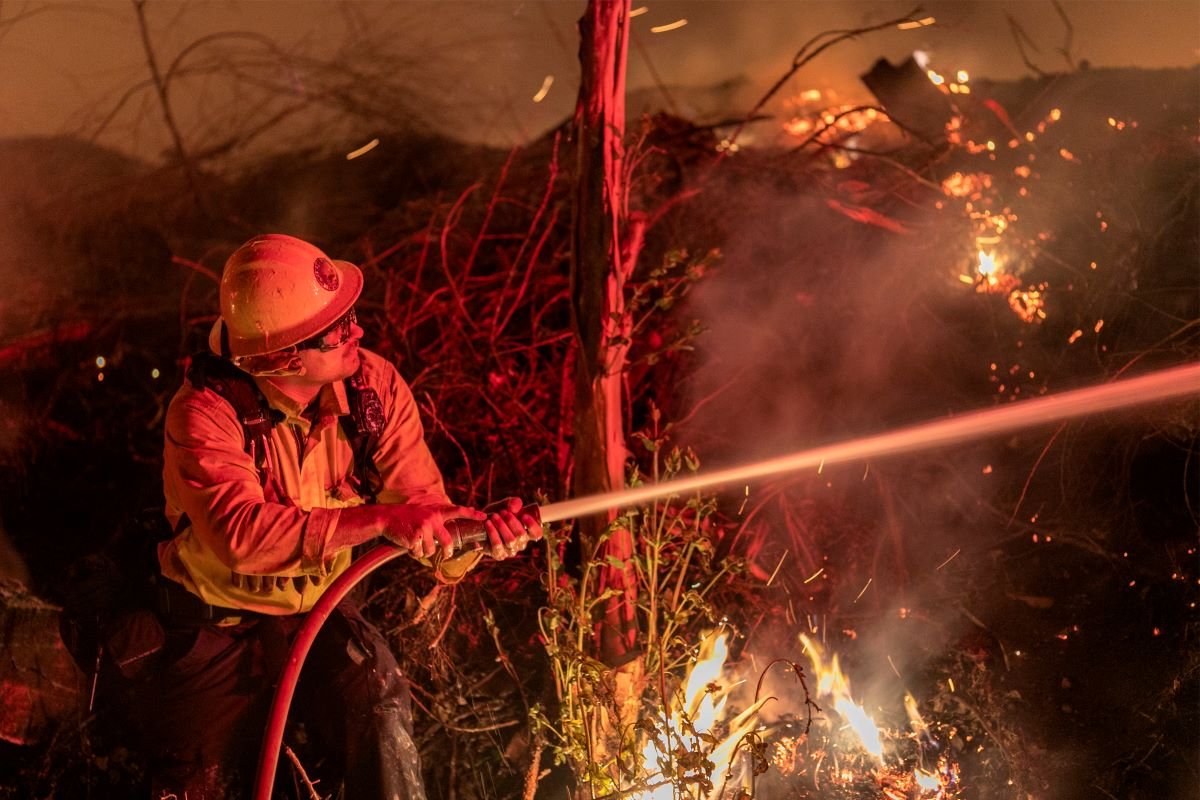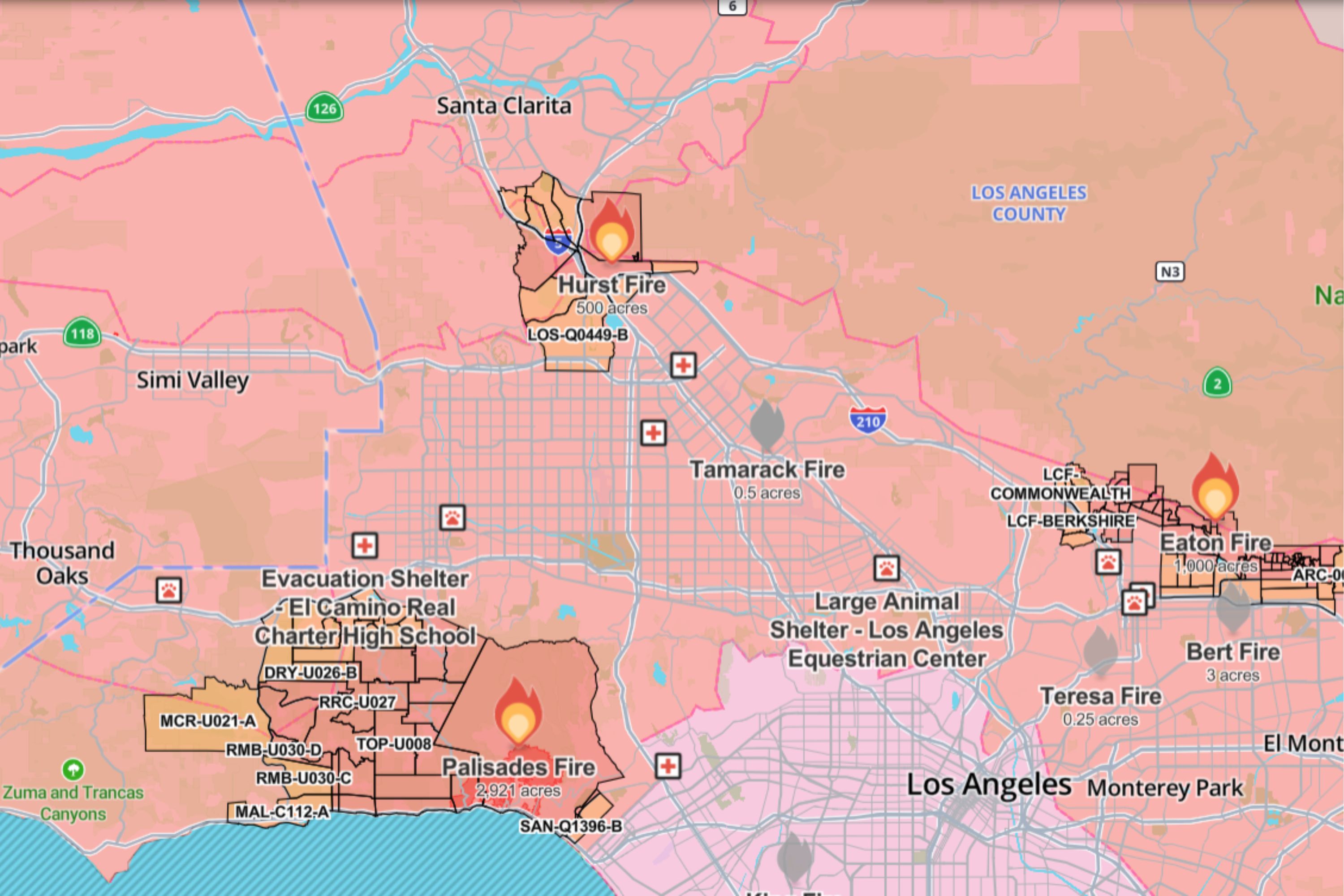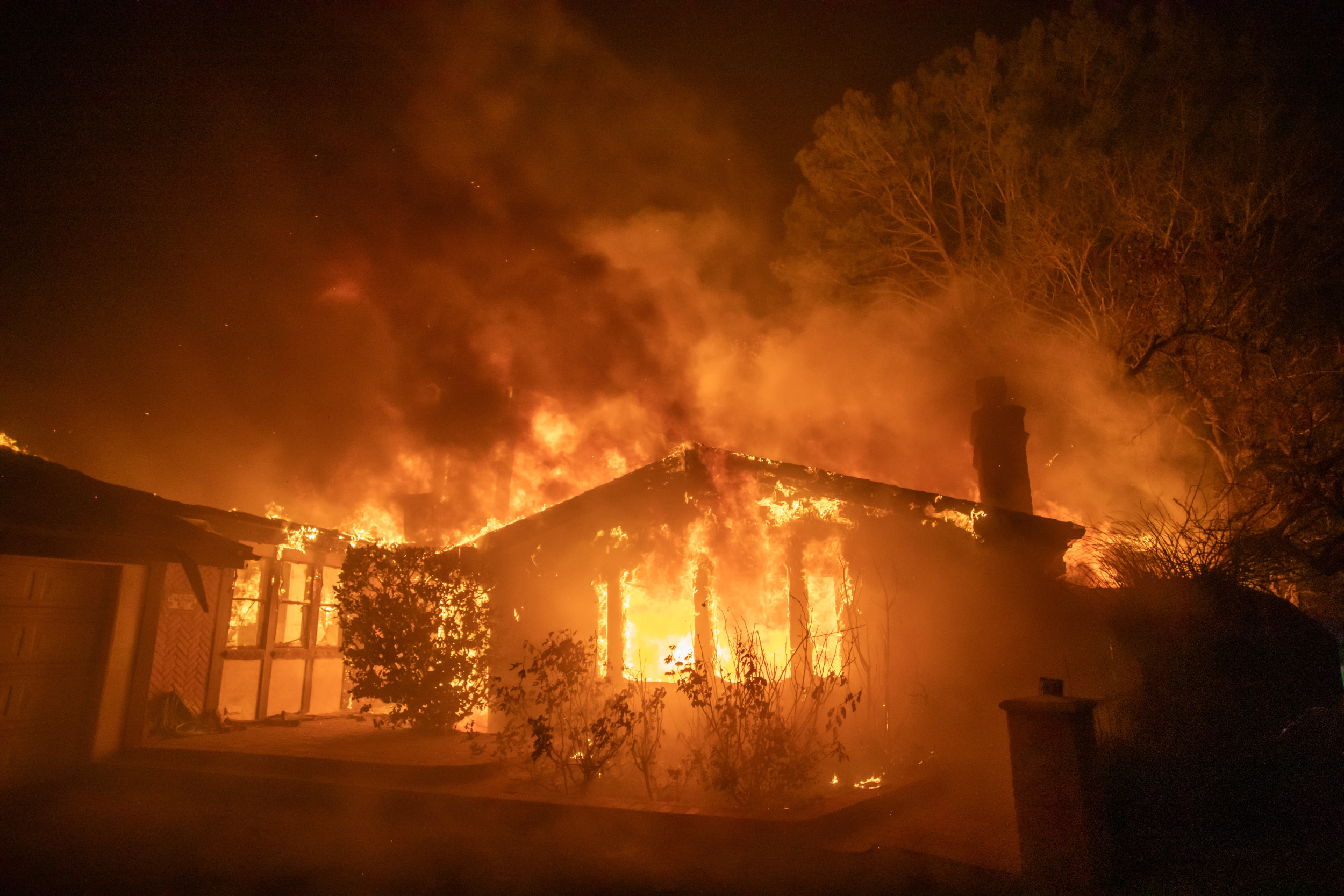Southern California is facing a major Santa Ana windstorm expected to bring dangerous and destructive conditions.
Gusts of 50–70 mph are forecasted from Tuesday afternoon through Wednesday morning, with localized maximums reaching up to 100 mph in elevated areas.
Regions such as the Santa Monica Mountains, Hollywood, Burbank, Beverly Hills and Malibu are at high risk.
"Residents should stay indoors and away from windows," warned the National Weather Service (NWS) office in Los Angeles, citing a "life-threatening and destructive windstorm."
The winds are also expected to create "extreme fire conditions" in areas already parched by ongoing drought.
"The 3 wettest months in California are typically January, February and March," Jayme Laber, a senior service hydrologist at the NWS, told Newsweek. "So far, Southern California has been dry or below normal. The lack of precipitation in the southern areas has kept the vegetation very dry and more susceptible to producing large fires if there were to be a fire start."

What Are Santa Ana Winds?
Santa Ana winds are dry, powerful winds that sweep across Southern California from inland deserts to the coast.
These winds are fueled by high-pressure systems over the Great Basin, where cooler air flows toward lower elevations near the Los Angeles Basin. As the air moves downslope, it compresses, heats and dries, creating conditions ripe for wildfires and property damage.
Santa Ana Winds can be powerful enough to damage utility lines, buildings and trees while spreading wildfires at alarming speeds.
What Causes Santa Ana Winds?
Santa Ana winds form when strong high-pressure systems in the interior West force cooler air downslope toward Southern California. The temperature of the air rises as it descends, and its relative humidity drops, creating warm and dry conditions.
For this event, a high-pressure system over the Great Basin is combining with a developing storm in northwestern Mexico.
"The strong winds will be a product of the greater weather setup," AccuWeather meteorologist Gwen Fieweger said in the advisory.
These conditions can sustain the gusty winds for 12–24 hours, though stronger events may persist for days.
Strong winds are coming. This is a Particularly Dangerous Situation - in other words, this is about as bad as it gets in terms of fire weather. Stay aware of your surroundings. Be ready to evacuate, especially if in a high fire risk area. Be careful with fire sources. #cawx pic.twitter.com/476t5Q3uOw
— NWS Los Angeles (@NWSLosAngeles) January 7, 2025Do Santa Ana Winds Only Affect California?
Santa Ana winds are specific to Southern California, but similar wind events occur globally. In the Rocky Mountains, Chinook winds bring rapid warming and dry air, often melting snow.
In Europe, Foehn winds share these characteristics. These winds occur when air is forced downward from high elevations, warming and drying out as it descends and is compressed.
Is January a Strange Time to Get Santa Ana Winds?
Although Santa Ana winds typically peak in October, they can occur anytime from late September through early spring.
January events are not unusual, especially in La Niña years like this one. La Niña conditions, marked by cooler-than-normal sea surface temperatures in the equatorial Pacific, tend to bring drier weather to Southern California.
"Being dry in southern areas and wetter in northern areas of the state follows along with what we can typically expect when we have La Niña," Laber said. "La Niña conditions are anticipated to continue through the winter."
Risks From The Current California Windstorm
The dry, gusty winds and parched vegetation create "extreme fire conditions," according to the NWS. Even a small spark could ignite a wildfire capable of spreading rapidly across the landscape.
Downed powerlines could add to this risk, meaning utility companies are likely to switch off power for large swathes of people while crews work to fix anything that blows over.
Winds gusting to hurricane-force levels in some areas are likely to cause damage and send debris flying, too.
"High-speed and dangerous winds like these can cause extensive property damage," Ryan Kittell, a meteorologist at NWS Los Angeles, previously told Newsweek.
High-profile vehicles and airplanes face significant risks from strong gusts, making travel disruption likely throughout Tuesday and Wednesday.
Do you have a tip on a science story that Newsweek should be covering? Do you have a question about Santa Ana Winds? Let us know via science@newsweek.com.




















 English (US) ·
English (US) ·